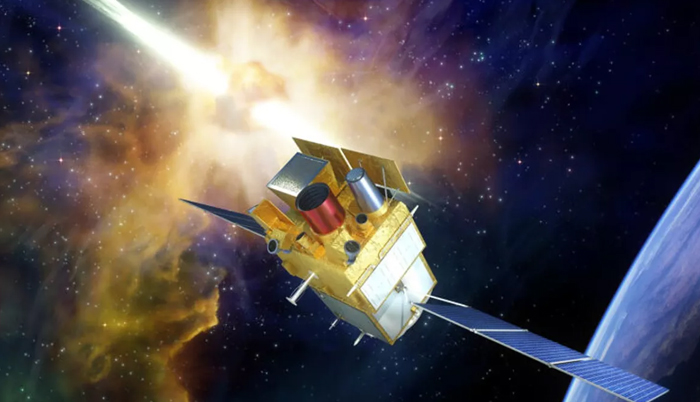![]() Home > Space & Science
Home > Space & Science
China And France Prepare To Launch Satellite To Hunt For Gamma-Ray Bursts

(Image credit: CAS)
![]() March 6th, 2023 | 13:23 PM |
March 6th, 2023 | 13:23 PM | ![]() 390 views
390 views
CHINA & FRANCE
SVOM seeks to detect short-lived, violent gamma-ray bursts.
France is set to send a pair of advanced science instruments to China in preparation for launch of a joint space observatory.
The Space-based multi-band astronomical Variable Objects Monitor (SVOM) is a collaboration forged in 2014 between the China National Space Administration (CNSA) and the Centre national d’études spatiales (CNES).
The satellite will be on the lookout for short-lived and extremely violent cosmic explosions known as gamma-ray bursts by detecting high-energy electromagnetic radiation in the X-ray and gamma-ray ranges.
The joint mission sees China providing the Gamma Ray Burst Monitor (GRM) to measure the spectrum of emissions from GRBs and Visible Telescope (VT) which will look for light emitted in optical wavelengths immediately after a gamma-ray burst (GRB) event.
France, meanwhile, is responsible for developing the ECLAIRs telescope and Microchannel X-ray Telescope (MXT), with the latter using innovative "lobster eye(opens in new tab)" optics to allow a large field of view.
The 2,050-pound (930-kilogram) satellite is now set to launch on a Long March 2C rocket from the Xichang spaceport in southwest China in December.
The mission's Twitter account revealed(opens in new tab) on Feb. 21 that the two payloads are now ready to travel to China for integration with the satellite.
The SVOM satellite was developed by China's Shanghai Engineering Center for Microsatellites and is designed for a nominal three-year-long mission with a possible two-year extended mission to follow.
Both China and France will contribute to the mission’s ground segment for controlling the spacecraft, receiving science data and orchestrating followup observations of GRBs.
The mission consortium(opens in new tab) includes institutes including the Institut de Recherche en Astrophysique et Planétologie (IRAP) in France and the National Astronomical Observatory of China (NAOC) and Institute of High Energy Physics (IHEP) in China, as well as the Leicester University in the UK and the National Autonomous University of Mexico (UNAM).
Source:
courtesy of SPACE
by Andrew Jones
If you have any stories or news that you would like to share with the global online community, please feel free to share it with us by contacting us directly at [email protected]